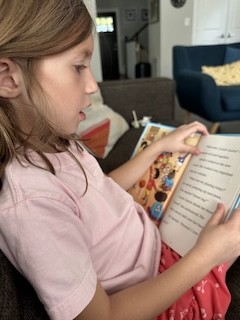Teacher question: I know you criticize the instructional reading level. But what about the independent reading level? Should we make sure that when children are reading on their own that they select books at their independent level or doesn’t that matter?
Shanahan response:
Back in the 1940s, Emmet Betts was trying to figure out how to improve reading instruction. The idea of matching books to students’ learning needs had floated around for decades in the research community. The 1910-1920s had ushered in reading tests and readability formulas, which provided clear scientific evidence that both books and children varied in difficulty (books) and facility (kids).
If variations in text difficulty affected reading comprehension and speed, why not learning as well?
The teacher’s editions of the 1920s usually recommended grouping to adapt reading instruction to varied abilities. The educational journals even offered recommendations on how put kids in the right books.
None of those schemes captured the hearts and minds of many teachers. Some resisted the idea of adapting instruction altogether. Others, who may have embraced differentiation, found the schemes to be onerous and unlikely (such as hiring a psychologist to test everybody’s IQ). When teachers did differentiate, they tended to do this based on their own views of the matter (which likely ranged from thoughtful attention to the kids’ performance to any kind of bigotry one can imagine).
Betts’ effort in this arena was notable both because it was empirical (science over opinion) and authoritative – he was a big shot in the reading field.
Betts’ set out to determine an instructional level, and he did so, at least to his satisfaction. The independent reading level was a side effect or unintentional consequence of this process.
The theory of the instructional level is pretty simple and fairly attractive: put kids in the right books and they will learn more. But what are the right books?
Betts’ surmised that level of difficulty was the key. On the one hand, if students could read a book well already, there wouldn’t be much opportunity to improve with that. And, if a book was especially hard then they might be discouraged or overwhelmed and that could undermine improvement, too. The trick, according to Betts, was to figure out which texts were in that sweet spot for a given student. His conclusion was that kids would do best if placed in text they could read the words with 95-98% accuracy and with 75-89% comprehension. That’s the scheme I learned early in my teaching career, and all these years later it is the scheme widely recommended by many reading authorities and programs.
My problem with that plan is two-fold. The way Betts chose those criteria (the 95-98%) was nonsensical and more recent studies have shown that matching kids to books like that doesn’t provide learning advantages. In other words, he did it wrong and it doesn’t work.
I’m not forgetting your question about the independent level. But a detour was necessary since that level was just an offshoot or by-product of the instructional level.
Betts thought students would improve their reading most from books they could already comprehend reasonably well. Where this idea came from is unknown. Years later no one could remember, but it’s fair to say he just made it up. So much for the science.
The oral reading accuracy part of the equation came out of a study of a Betts’ doctoral student (P.A. Killgallon) that examined 41 fourth graders to determine how many oral reading mistakes they could make and still reach Betts’ made-up comprehension levels. That’s where the 95-9% came from. Those students could usually err that much in oral reading and still answer 75-89% of the questions.
They never even evaluated whether such book placement was beneficial to the children. That’s why I think it to be a boneheaded approach. It makes teaching relatively easy since with such placements students can already read the instructional book reasonably before any teaching begins.
The independent level was just what was left over. In the Betts’ scheme a book is at a student’s independent level if it can be read with 99-100% accuracy and 90-100% comprehension. He was even particularly explicit about what such a placement meant. Years ago, Catherine Snow pointed out the flaw in the ointment… kids weren’t supposed to be able to learn much on their own from texts that were harder than the “independent level” and books at that level tended to not include much that the kids didn’t already know. Damned if you do and damned if you don’t.
What that highlights is that there is really no explicit theory of what an independent level is or how it works. If an instructional level placement is supposed to deliver maximum progress in learning to read, then what is it that an independent level promotes? Some possibilities include ease or minimal effort needed to gain information from a text, enjoyment, and, perhaps, a sense of well-being or competence for the reader.
Unfortunately, research shows that except for the easy reading outcome, requiring students to stay to what they can read independently by these criteria fails to accomplish any of these other goals. Such independent reading usually doesn’t improve reading, provide enjoyment, or encourage a positive sense of self as reader
Not surprisingly, poor readers, when left to their own devices, tend to select books above their reading levels. This isn’t surprising since book availability is often skewed towards harder texts (a third-grade classroom will probably have more third-grade books than anything else). Then there is curiosity; a student who doesn’t read well is still likely to be interested in the same things that other students are. Then there is self-esteem and social standing; most kids wouldn’t be caught dead reading a “baby book.”
No, that is not surprising. What is surprising is that this tendency to frequently select difficult text for enjoyment is evident even with the better readers (Donovan, Smolkin, & Lomax, 2000). Studies find no relationship between student enjoyment of books and the degree to which the books match with their supposed reading levels, and students rarely refer to difficulty when they discuss their selection of books (Halladay, 2008).
We’ve known for a long time that interest can improve student reading performance, though it isn’t entirely clear how much of this is due to background knowledge and how much to motivation – since those tend to be so closely related.
The idea of kids selecting books that are “too hard” often bothers because of their fear that kids won’t read the words but just looking at the pictures. That is a legitimate concern with instructional texts, but not with self-selection. Let kids read what they want to read for independent reading or at least let them give it a try.
That doesn’t mean that we can’t provide guidance and advice. However, many teachers and librarians limit children's reading to this figment of the imagination "independent reading levels" -- instilling a dread of reading and a fear of failure.
“Jimmy, that’s a wonderful book about World War II. Are you interested in that war? I think some of the words might be hard for you – I usually recommend that one for fifth graders, but if you want to give it a try go right ahead. Tell me if you think it is too hard, and I’ll try to help you find an easier one about that war.”
Or, “Patty that’s a terrific story, but some second-graders tell me they find it hard to read. Why don’t you take this book along, too. It’s a really good story, so if you find that one too hard or just don’t like it, then give this one a try and see what you think (or read them both if you like).”
Of course, we want independent reading to support learning and to encourage future reading habits. But text leveling is not an effective way to go.
Encourage students to take on reading challenges – to read books that scare them a little. It’s a good thing to know that you can pursue your curiosity through reading, even if it doesn’t always work out on the first try. There is nothing wrong with discontinuing a book in the middle or to read it more than once to get what it says.
Independence is not a matter of text levels, but of desire and courage. Children often enjoy trying to meet a challenge; for them, easy doesn’t mean fun.
Oh, and the Easter Bunny? You’re too old to believe in either independent reading levels or the Easter Bunny – they’re made of the same stuff.
References
Betts, E. (1946). Foundations of reading instruction. Boston: American Book Company.
Donovan, C. A., Smolkin, L. B., & Lomax, R. G. (2000). Beyond the independent-level text: Considering the reader–text match in first graders' self-selections during recreational reading. Reading Psychology, 21(4), 309-333.
Halladay, J. L. (2008). Difficult texts and the students who choose them: The role of text difficulty in second graders' text choices and independent reading experiences. Unpublished doctoral dissertation, Michigan State University.







Comments
See what others have to say about this topic.